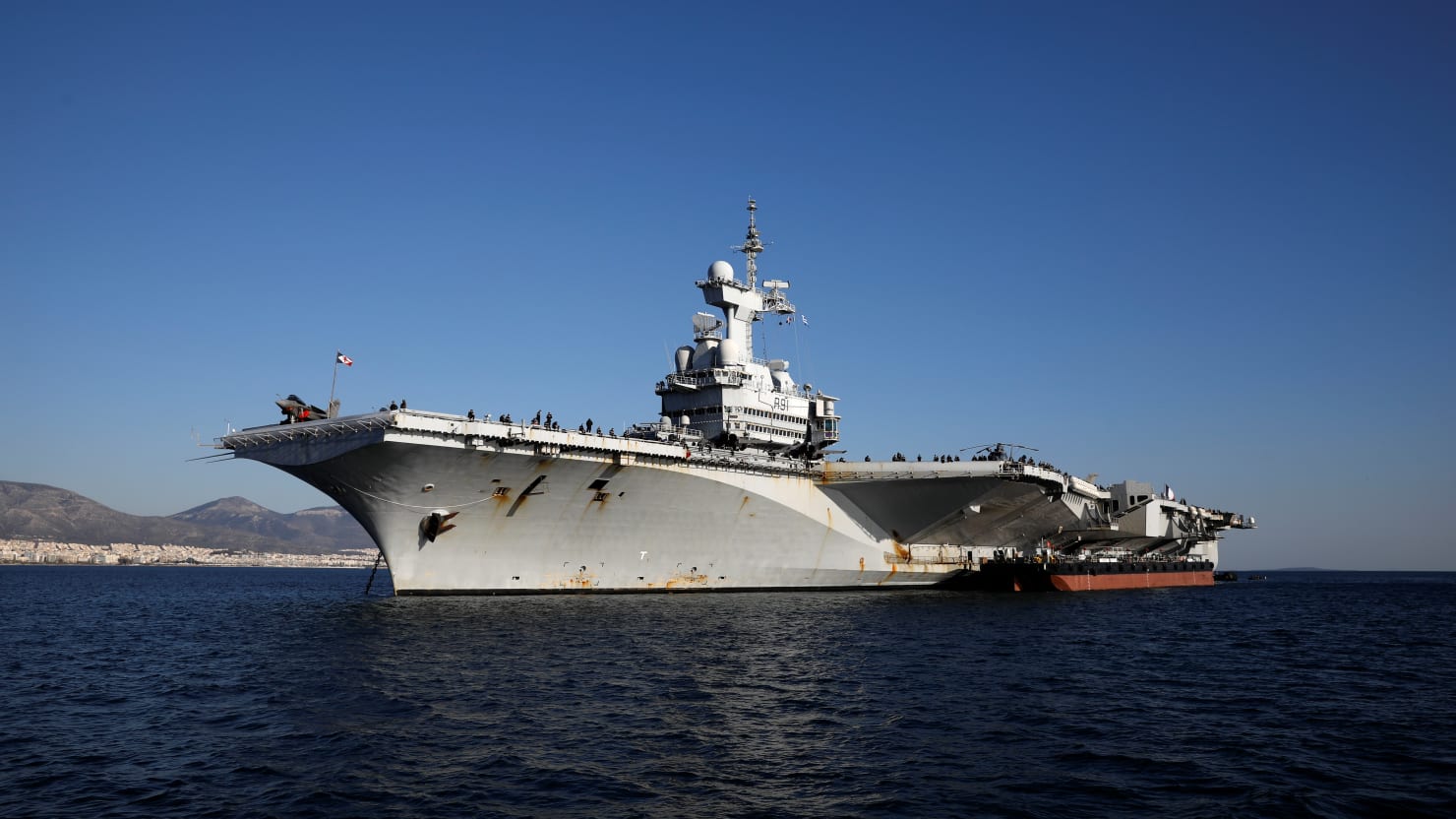The latest images surfacing on the Chinese microblogging site Weibo strongly indicate that China’s Fujian aircraft carrier is gearing up for its maiden sea trials. This suggests the warship remains on course for its planned deployment in the Chinese navy in 2025.
The Fujian is China’s largest and most advanced warship, marking a significant milestone in the PLA’s efforts to modernize its military capabilities and bridge the technology gap with the United States.
The new pictures revealed that the protective covers had been lifted from all three advanced electromagnetic catapults on the Fujian’s deck, providing a long-awaited opportunity to catch a firsthand glimpse of the complete aircraft launch system.
The development comes approximately two months after the emergence of images, where it was also noted that one of the covers had been removed. This observation strongly implies the likelihood of imminent take-off tests.
Removing all protective covers is an important milestone, suggesting that debugging the electromagnetic catapults has been completed.
Very clean flight deck, all work gear and structures removed. Reinforces the impression that a first trial may indeed happen very soon. https://t.co/x8L8Ncp8rJ pic.twitter.com/HYtrHPpchg
— Alex Luck (@AlexLuck9) September 5, 2023
This paves the way for the aircraft launch systems to operate seamlessly during the forthcoming sea trial phase. Alex Luck, an expert who monitors developments concerning the Chinese Navy (PLAN), also made note of this fact when he recently posted a new image of CV-18 Fujian.
He noted that the shelters covering all three catapult tracks have been removed, and various equipment, including weapons, is in place (consistent with previous information). This suggests that the first trial is approaching, though the exact timing remains uncertain.
During the sea trials, the primary emphasis will be evaluating the carrier’s propulsion, navigation, and communication systems. Subsequently, it will transition into the second stage, which involves testing other ship-borne equipment.
In addition, several images depicted smoke emerging from the warship’s chimney, signaling that thorough tests of the primary propulsion system and other equipment were actively taking place.
Another image shared by X (formerly Twitter) user Rupprecht_A appears to capture the ongoing painting and coating work performed on the Fujian island superstructure.
Meanwhile, Song Zhongping, a former People’s Liberation Army instructor, told SCMP, “The first sea trials would take place only in nearshore waters, and the process might go on for at least a year.”
He mentioned that it is probable that the process will involve six months of sea trials, followed by an additional year of testing specific equipment and weapon systems.
Chinese experts anticipate that during the trials, the Fujian will likely test the J-15T, a carrier-based fighter jet equipped with a catapult launch system.
The J-15T is an improved, catapult-capable iteration of the J-15 “Flying Shark,” a fourth-generation aircraft and the sole carrier-based fighter jet in China’s inventory.
In the past, it was reported that ground-based flight tests of the J-15T have been ongoing for several years at the People’s Liberation Army Navy’s training base in Xingcheng, which is situated in Liaoning province.
China’s Most Advanced Fujian Aircraft Carrier
The Fujian, China’s largest, most advanced, and most formidable aircraft carrier to date, weighs 80,000 tons and is the flagship of an extensive military expansion that has propelled Beijing to have the world’s largest navy.
Initially, the Fujian was planned to be equipped with three conventional steam-powered catapults, as China lacks a ship-borne nuclear reactor, unlike all US aircraft carriers.
However, in 2017, President Xi Jinping, who also leads the influential Central Military Commission, decided to alter the carrier’s design.
Instead of steam catapults, the Fujian was retrofitted with a modern integrated propulsion system supporting advanced electromagnetic launch systems.
The platform is the world’s second aircraft carrier to employ an electromagnetic catapult system for launching aircraft from its flight deck, a technology previously seen only on the US Navy’s nuclear-powered Gerald R. Ford-class carriers.

It is also the first domestically designed and constructed carrier of the Chinese Navy, featuring an advanced electromagnetic aircraft launch system, in contrast to the traditional ski-jump ramp employed on China’s first two carriers.
The catapult system represents a substantial leap forward in naval aviation capabilities, greatly expanding the spectrum of aircraft launched from the aircraft carrier’s deck.
Notably, it enables the deployment of a wider variety of aircraft, encompassing both piloted and potentially unmanned options. This includes the capacity to launch transport aircraft and fixed-wing airborne early-warning and control aircraft, significantly enhancing the carrier’s operational versatility.
Furthermore, the system, according to experts, enables faster aircraft launches while accommodating more significant fuel and weapon payloads. Consequently, the navy gains the capability to execute swift flight operations and enhance the range and efficacy of its carrier-based fighter aircraft.
Following its scheduled tests, the Fujian is slated for deployment in real operational scenarios, a milestone expected to occur around 2025. This deployment aligns with China’s strategic vision, seeking to establish the three-carrier strike group.
This configuration would enable a seamless rotation of missions, facilitate comprehensive training, and streamline maintenance processes, mirroring the operational approach of the US Navy’s carrier strike groups.
China is also reportedly exploring the acquisition of a nuclear-powered carrier, a development that would eliminate the requirement for frequent refueling, enhancing the carrier’s operational endurance and autonomy.
- Contact the author at ashishmichel(at)gmail.com
- Follow EurAsian Times on Google News




